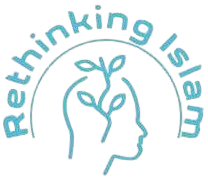With an increasing need for understanding and acceptance, you hold the power to teach Islam in a manner that embraces tolerance and respect, rather than fear or coercion. Your approach can shape perceptions, dispelling myths and fostering compassion. By emphasizing the core principles of peace and community, you can create an environment where individuals feel safe to learn and engage with the teachings of Islam. Together, let’s explore effective strategies that empower individuals to appreciate the rich tapestry of Islamic culture and beliefs.
Building a Foundation: Contextualizing Islamic Teachings
Understanding Islamic teachings requires a solid foundation built on the contexts that shape them. By acknowledging the historical and cultural backgrounds from which these teachings emerged, you can foster a deeper appreciation and acceptance among your students. Contextualizing Islam allows you to bridge the gap between contemporary concerns and the timeless principles of faith, opening the door to meaningful discussions and engagement.
Historical Perspectives: The Roots of Islamic Culture
Islamic culture is rich and diverse, deeply rooted in history, from the early days of the Prophet Muhammad in 7th-century Arabia to the flourishing civilizations in Spain and the Middle East. These historical perspectives not only highlight the dynamic development of Islamic thought but also show how interactions with various cultures led to advancements in science, philosophy, and the arts. Such a historical lens encourages students to view Islam as a living tradition shaped by a tapestry of experiences rather than a static set of beliefs.
The Role of Interpretation in Islamic Education
Interpretation plays a pivotal role in Islamic education, emphasizing that teachings are open to understanding and reflection. Scholars often engage in ijtihad, or independent reasoning, allowing for varied interpretations that resonate with different contexts and communities. This flexibility is evident in the numerous schools of thought within Islam, illustrating that understanding the faith is not about rigid adherence but about *dynamic engagement and personal growth*.
The role of interpretation extends beyond mere academic discourse; it actively shapes how individuals understand their faith today. For instance, different interpretations of the Quran can guide communities in addressing modern challenges like social justice or environmental stewardship. Engaging with these interpretations invites your students to explore and question, fostering an environment of critical thinking. Moreover, by introducing multiple viewpoints, you help eliminate stereotypes, illustrating that Islam is not monolithic but a spectrum of beliefs and practices. Engaging with these varied interpretations not only enriches the learning experience but also empowers students to make informed decisions about their beliefs and values.
Navigating Common Myths: Dispelling Misconceptions About Islam
By understanding the common misconceptions surrounding Islam, you can actively engage in conversations that enlighten rather than alienate. The prevalent myths not only distort the beauty of Islamic principles but also perpetuate stereotypes. Your role is vital in dismantling these inaccuracies by sharing authentic information and experiences, thereby paving the way for a more inclusive society.
Stereotypes in the Media: How They Shape Perceptions
The media often shapes perceptions of Islam through sensationalism and negative portrayals. This can lead to a distorted understanding that associates Islam with violence and extremism, overshadowing the peaceful tenets that the majority of Muslims adhere to. Positive stories about Muslim communities often go unreported, which reinforces negative stereotypes in public perception. Media representation both reflects and influences society’s view of various cultures. Your engagement can shift the narrative.
- Misrepresentation leads to skewed perceptions
- Violence associated with Islam often highlights extremists
- Positive narratives about Muslims are underreported
- Empathy and understanding bridge gaps in perception
- Perceiving Islam solely through negative lenses perpetuates discrimination
| Common Stereotype | Reality |
| All Muslims are extremists | The vast majority practice peace and tolerance |
| Islam promotes violence | Core teachings emphasize compassion and dialogue |
| Muslims reject modernity | Many are at the forefront of innovation and education |
| Women are oppressed | Many Muslim women lead active, empowered lives |
Addressing Extremism: Understanding the Difference between Extremists and Mainstream Islam
Extremism represents a radical deviation from the core teachings of Islam, which advocates for peace, justice, and understanding. The vast majority of Muslims reject extremist ideologies, and it’s vital to highlight this division. Extremists often distort scriptures to serve their agendas, while mainstream Muslims practice their faith as a source of guidance for moral living. By focusing on this distinction, you can contribute to a more accurate understanding of Islam.
The phenomenon of extremism is often portrayed as synonymous with the Islamic faith, overshadowing the diverse interpretations and practices within. A 2017 study indicated that less than 1% of the world’s Muslims support extremist views, reflecting that the vast majority are peaceful. Engaging in discussions that clarify these nuances not only promotes understanding but also empowers individuals to challenge stereotypes. By showcasing the voices of mainstream Muslims, you aid in redefining the narrative that has unjustly tainted perceptions of Islam.
Empowering Educators: Strategies for Teaching Islam Effectively
Empowering educators involves equipping them with tools and techniques that foster a deeper understanding of Islam. By providing training focused on cultural sensitivity and offering ongoing professional development opportunities, you can transform how Islamic studies are approached in the classroom. Creating a collaborative network among educators encourages the sharing of resources and strategies that have proven successful. This supportive framework not only enhances teaching methodologies but also builds confidence in addressing challenging topics, allowing you to guide students toward meaningful, respectful conversations about Islam.
Creating a Safe Learning Environment: Techniques for Open Dialogue
Fostering a safe learning environment starts with establishing ground rules that promote respect and confidentiality. Encourage students to share their thoughts and questions without the fear of judgment. Techniques such as group discussions, role-playing, and using restorative practices can help facilitate open dialogue. You might find that creating a “safe space” corner in your classroom allows students to express themselves freely while also feeling supported. Incorporating regular check-ins can nurture trust, making it easier for students to engage with sensitive topics related to Islam.
Employing Engaging Materials: Resources that Foster Understanding
Utilizing engaging materials can significantly enhance students’ understanding of Islam. Incorporating multimedia resources such as documentaries, interactive websites, and guest speakers from diverse Islamic backgrounds creates a richer learning experience. Books and literature by Muslim authors can provide authentic perspectives, fostering empathy and insight. You can also explore educational games or simulations that present Islamic history and culture in a relatable manner, sparking curiosity and deeper inquiry among students.
Incorporating multimedia resources can transform traditional lessons into dynamic learning experiences. For example, documentaries like “The Mosque: A Story of Faith and Humanity” open discussions about representation and identity in Islam. Additionally, interactive websites like “Islam 101” provide quizzes and activities that encourage exploration beyond textbooks. Using literature from Muslim authors, such as “Funny in Farsi” by Firoozeh Dumas, allows students to engage with personal narratives that highlight cultural diversity. These varied resources not only foster understanding but also invite students to contextualize their learning within broader societal discussions.
Embracing Inclusivity: Incorporating Diverse Voices in Islamic Education
Incorporating diverse voices in Islamic education ensures a richer and more holistic understanding of Islam. This approach not only engages students from various backgrounds but also reflects the global tapestry of the Muslim community. By integrating *multiple perspectives*, including those originating from different cultures and traditions, you create an inclusive environment that encourages dialogue and promotes mutual respect. This inclusivity empowers your students to appreciate the various interpretations and practices within Islam, cultivating a sense of belonging and community that transcends mere textbook learning.
Highlighting Female Scholars: The Overlooked Contributions
Featuring female scholars in your curriculum reveals the *significant role women* have played in Islamic history and thought. Figures like Fatima al-Fihri, founder of the world’s first university, and Aisha bint Abi Bakr, an influential scholar and hadith transmitter, exemplify the *rich intellectual legacy* women have contributed. Highlighting their achievements not only inspires young girls but also fosters a more equitable narrative about Islam that challenges prevailing stereotypes.
Bridging Cultural Gaps: Success Stories of Integrated Programs
Integrated educational programs have showcased the success of bridging cultural divides. For instance, initiatives like the *Cultural Bridges Program* in Canada have connected students from various backgrounds through shared learning experiences. By incorporating local histories and Islamic principles, these programs have fostered mutual understanding and collaboration. Students learn together in diverse groups, sharing personal stories that encourage deep connection, offsetting prejudice, and enriching their educational journey. This approach not only enhances camaraderie among participants but also deepens their understanding of Islamic teachings in a contemporary context.
Success stories illustrate how these integrated programs effectively break down barriers and pave the way for more harmonious interactions. In many cases, participants report a marked increase in mutual respect and friendship, showcasing a significant shift in attitudes towards cultural differences. Studies indicate that students involved in such initiatives exhibit *higher levels of empathy* and understanding, ultimately creating a more cohesive learning atmosphere. The positive impact of these programs extends beyond just academic learning; they cultivate lifelong relationships grounded in respect, dialogue, and shared values, encouraging the next generation to approach diversity with openness and curiosity.
The Role of Community: Engaging with Parents and Local Organizations
Engaging with parents and local organizations is vital for creating a sustainable and positive learning environment. Your collaboration can foster a sense of ownership and responsibility within the community, promoting a comprehensive understanding of Islamic teachings. By involving parents in educational discussions and activities, you can bridge the gap between home and school, ensuring a cohesive approach to learning that resonates with the values and beliefs of the community.
Collaborative Efforts: Building Partnerships for Better Education
Establishing partnerships with local organizations can amplify your educational efforts, providing resources and expertise that enhance learning experiences. You may find that working with community centers, mosques, and cultural organizations fosters a collective commitment to raising awareness about Islamic values. Through joint events, workshops, and programs, you can enrich your curriculum, benefiting both students and the broader community.
The Importance of Feedback: Adapting Curriculums to Community Needs
Feedback from parents and community members allows you to adapt your curriculum to better meet prevailing needs and interests. Regular surveys, suggestion boxes, or community forums can unveil valuable insights into what works and what doesn’t, ensuring that you remain responsive to changing dynamics. Tailoring your program to reflect the unique cultural aspects and challenges of your student population strengthens community ties and enhances educational outcomes.
By systematically collecting feedback, you harness a powerful tool that allows you to evaluate the effectiveness of your curriculum and teaching strategies. For instance, when you receive input on specific topics of interest or cultural practices that resonate with your students’ experiences, it enables you to customize lessons that are more engaging and relatable. A case study from a community in California demonstrated that by incorporating parent suggestions into lesson plans, student participation rates increased by 30%, reflecting the community’s active involvement and investment in education. This iterative process of adapting to community needs not only benefits students academically but also builds lasting bonds, ensuring that your educational efforts align with their life experiences and aspirations.
Final Words
The journey of teaching Islam without fear or force encourages you to embrace a compassionate and open-minded approach. By fostering an environment of understanding and respect, you empower yourself and others to engage with the teachings of Islam authentically. It is your responsibility to create a dialogue that emphasizes curiosity and acceptance, allowing students to explore their faith and its values freely. Through patience and empathy, you can help bridge gaps and dispel misconceptions, making the learning experience enriching for everyone involved.


